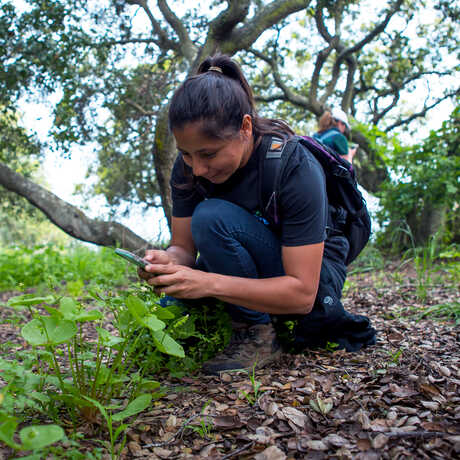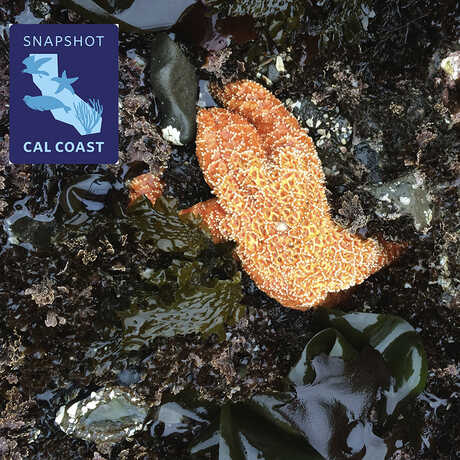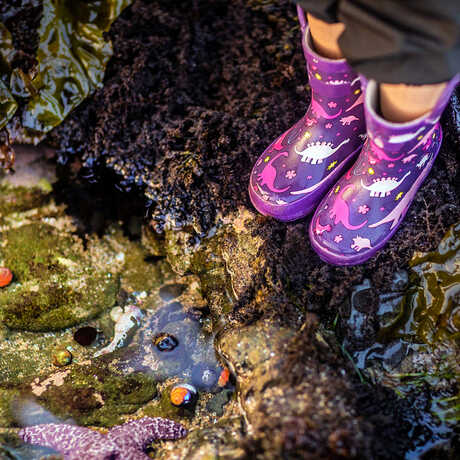Scientist Spotlight
Alison Young
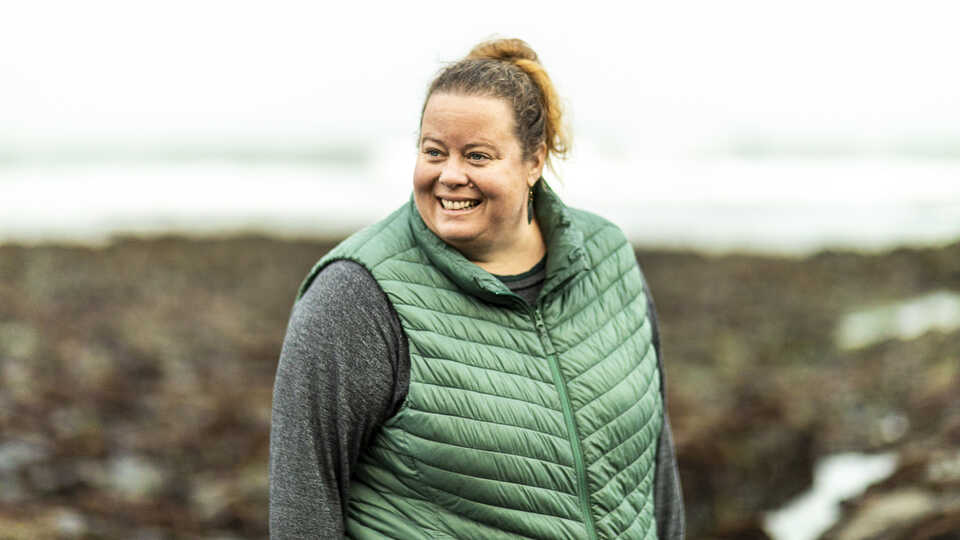
Alison Young, co-director of the Center for Biodiversity and Community Science, joined the Academy in 2011. As the co-founder of City Nature Challenge and co-director of the Academy's Thriving California initiative, Young has a passion for connecting people with nature and each other.
Learning from nature
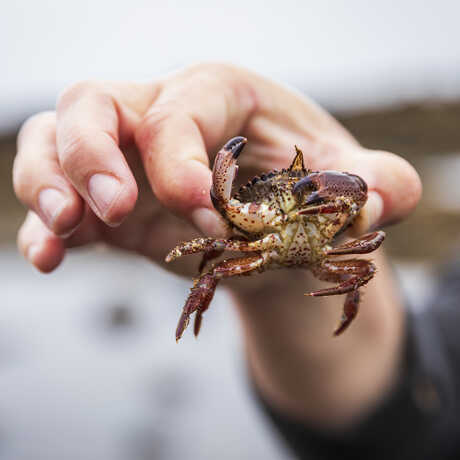
When Center for Biodiversity and Community Science Co-Director Alison Young isn’t exploring tidepools for work, she’s probably exploring tidepools for fun.
Like many Bay Area natives, Young grew up with plenty of access to the outdoors. She quickly found comfort in nature as a Girl Scout exploring the Bay Area’s wide variety of ecosystems. Her career as a naturalist arguably began in the sixth grade during a week-long class trip to an outdoor school in the Santa Cruz Mountains, part of a statewide network of immersive environmental learning programs. After five days of hiking through redwood forests, scrambling across slippery tidepools, and scouring estuaries for signs of wildlife, Young found a deep appreciation for California’s biodiversity—and for sharing it with others. She returned to that same outdoor school as a volunteer counselor throughout high school and college.
Young originally attended Swarthmore College in Pennsylvania as an English major, but she switched to the biology track after just one semester in an introductory animal behavior and ecology course. “Once I realized that science was also about being outdoors and not just in a lab, I decided I would make a career out of it,” Young recalls.
With a degree in biology and a keenness to spend more time in nature, Young returned to California and spent six years as an environmental educator at various outdoor schools in the Santa Cruz Mountains. Every week, she led a new batch of visiting fifth and sixth graders through old-growth redwood forests, oak woodlands, and coastal marshes, tidepools, and beaches. The program’s curriculum was broad: basic ecology to better understand how various ecosystems functioned; gardening and composting to more closely connect with the land; solo hikes and night hikes to boost confidence and comfort in nature. “When the kids look back on this experience, they may not remember specific nutrient cycles of the forest,” Young says. “But my hope is that they remember the feeling of spending time outdoors and connecting with nature.”
On the rocks
The rocky intertidal zone is the ever-changing ecosystem where ocean and land meet. Underwater during high tides and exposed during low tides, this dynamic habitat boasts some of our planet’s coolest, weirdest, and densest biodiversity. In California, common rocky intertidal residents include crabs, sea stars, nudibranchs, urchins, anemones, mussels, and many more. “Nearly every major phylum is represented in the rocky intertidal,” Young says. “There is nowhere else on Earth where you can find this many different species in such a small amount of space.”
Young began her research on the rocky intertidal zone as a graduate student at Humboldt State University. She specifically wanted to better understand the effects of climate change on mussel beds, which serve as critical habitat for intertidal invertebrate species. “There were studies on how rising air temperatures affected mussels, but none on the species that make up the mussel bed community,” Young explains. To investigate, she made fake mussels out of two colors of plastic—black to absorb heat, white to reflect it—and deployed multiple groups of each color into the tidepools. She surveyed the surface community continuously over a year and then collected them to examine the internal communities. She found that the on the surfaces of the mussels, which are exposed to air temperatures, the ecological community of the colder group was more robust than that of the warmer group, but on the inside of the mussel groups, where it’s cooler, darker, and wetter because it’s not exposed to the air, the communities were similar, regardless of color. As global temperatures continue to rise and destabilize coastal ecosystems, understanding this species interdependence will help inform how to better protect intertidal communities as various stressors are introduced.
For Young, the tidepools are also a playground. Outside of work, she regularly investigates tidepools in and around the Bay Area with the same sense of curiosity she had as a graduate student: “There’s potential to find something new or rare every time I visit a tidepool. No matter how many times I’ve been to the same spot, each experience can be something entirely different.”
City Nature Challenge
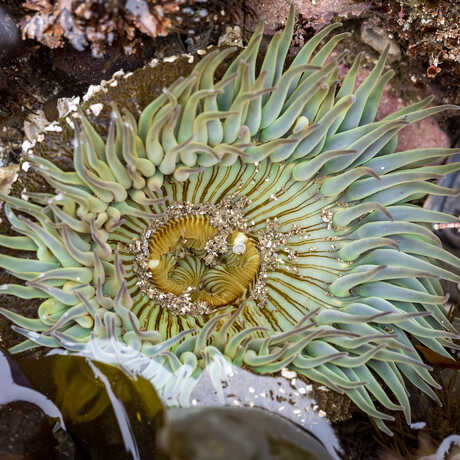
In 2016, Young and fellow co-director Rebecca Johnson founded the City Nature Challenge in partnership with the Community Science Department at the Natural History Museum of Los Angeles County. What originally started as a friendly competition between San Francisco and Los Angeles in 2016 is now the largest community science event in the world, spanning more than 650 cities across all seven continents. Using the community science platform iNaturalist, participants document their local biodiversity over a four-day global bioblitz. For Young, the most rewarding part is seeing how local organizers make the Challenge their own. “Some cities focus on hosting multiple bioblitzes, and some focus on engaging schools or targeting specific communities,” Young says. “It’s incredible to see how different the Challenge looks from city to city, yet we’re all working towards the same goal. To me, that’s what makes it so successful.”
Young is ensuring all this valuable community science data is being put to good use. As part of the Academy’s Thriving California initiative, she’s working to integrate iNaturalist observations into California State databases, which will inform conservation decisions and highlight the gaps in our biodiversity knowledge. “Whether you record an endangered or a common species, any observation you make on iNaturalist is going to help conservation managers decide which species and places to protect.”
Scientist Q & A
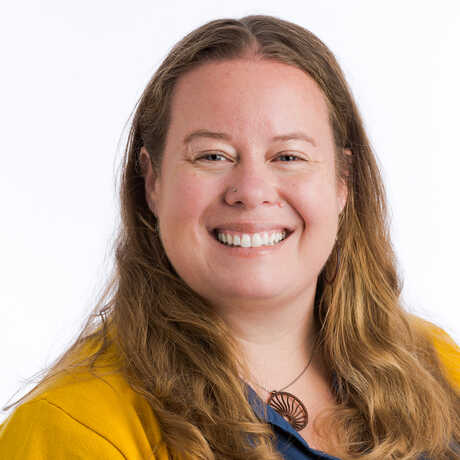
Who is your science hero?
John Pearse. He was an ecology and evolutionary biology professor at UCSC, and started what eventually became the LiMPETS community science program at the Greater Farallones National Marine Sanctuary, which is where I first met him when I was hired as the LiMPETS Coordinator after grad school. While he was a giant in the intertidal ecology field, he never made anyone feel small about not knowing something. He truly enjoyed sharing his love of the intertidal zone with others and demonstrated how one could do good science, share joy, and have fun in nature, all at the same time. It's a mindset that I've carried into my work in tidepool research and community science overall.
What is your weirdest tidepool critter find?
A wolf eel head! One of our volunteers found it during a Snapshot Cal Coast bioblitz, and it just raised so many questions: Why are the teeth so pink? Why did we find just a head? It was fun and educational talking to our colleagues here in IBSS to try to solve the mystery!
What iNaturalist observation are you most proud of?
Dwarf mottled sea star (Henricia pumila) embryos. Each of these little orange friends is only 2-3 millimeters tall! I had no idea what they were when I first found them, but I knew by posting them on iNaturalist and sharing them with some colleagues that someone could probably tell me—and it turned out my photo is one of the only times these embryos have been documented!
What is your favorite creature on exhibit at the Academy?
I really love the strawberry anemones on display in our rocky reefs tank. Their color is so vibrant and there are so many interesting little marine invertebrates hiding amongst them!
Any words of advice for future scientists?
Make time to do the things that got you excited to go into science in the first place! Especially as science turns into a career, it's really easy to get sucked into meetings, emails, writing papers—all of which are important and necessary—but be sure to also give yourself time to do those science-y things that you love and bring you joy, whether that's being in the field, working on cool new data visualizations, or sharing your science with others.
Department: Community Science
Title: Co-Director, Center for Biodiversity and Community Science
Learn more:
Twitter profile
City Nature Challenge
Watch:
"City Nature Challenge 2023"
"NightSchool: City Nature"





